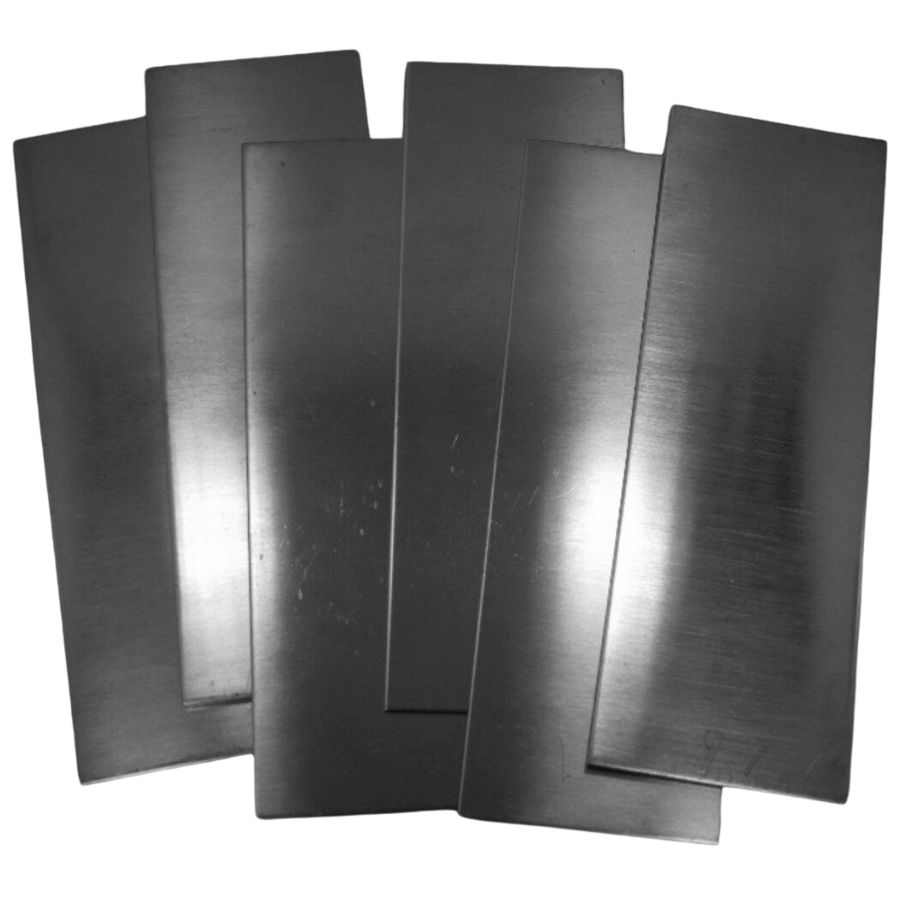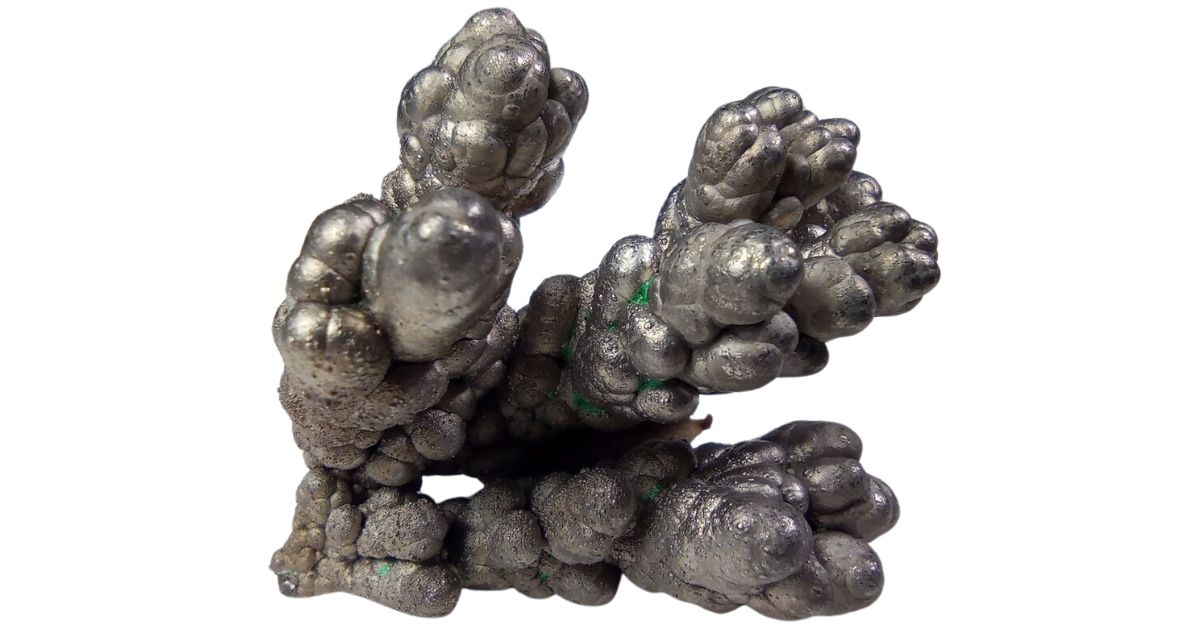The question of how much nickel is worth can depend on many factors, like market demand and how much nickel is available. The price of nickel changes often, which can affect industries like manufacturing and electronics that use a lot of nickel.
Understanding the value of nickel is important because it’s used in so many things around us, from kitchen appliances to mobile phones.
What is Nickel
Nickel is a shiny, silver-white metal that is very strong and resistant to corrosion. It is often mixed with other metals to make alloys, which are used to create things like coins, jewelry, and parts for machines.
These are the different forms that nickel comes in.
Pure Nickel

Pure nickel is a shiny, silver-white metal that’s really tough and can be found in various places around the world. It can be stretched, bent, and shaped without breaking, which is why people like using it for different things.
But, pure nickel isn’t found in everyday items because it’s kind of expensive and reacts with air to get a dull coating. This reaction doesn’t stop it from being valuable in making things like batteries and special machines, though.
In the world of making electronics and tools that help speed up chemical reactions, pure nickel is super important. It’s because it’s very clean and doesn’t mix with other things easily, making it perfect for jobs that need materials to be just right.
How much is pure nickel worth
The price of high-purity nickel depends on its form, with a general market price around $8.05 per pound.
However, the price can vary depending on form. 99% nickel granules can cost up to $150 per kilo, nickel sheets can cost up to $50 per kilo, nickel strips range from $13 to $70 per kilo, and nickel rods are priced between $65 and $130 per kilo.
Pentlandite

Pentlandite is a mineral that’s mostly made up of nickel and iron. It looks metallic and is usually yellowish to bronze in color, which is typical for many nickel-bearing ores.
This mineral is one of the most important sources of nickel for commercial use. It is mostly mined in places like Canada, Russia, and South Africa, which have large deposits of it.
The nickel that’s obtained from pentlandite is used in making things like batteries, stainless steel, and even coins.
How much is pentlandite worth
Pentlandite isn’t commonly sold as a specimen. When it is available, the price can range from $10 to $20 per piece.
Garnierite

Garnierite is a green mineral that often attracts attention due to its bright and appealing color. It is composed primarily of nickel and magnesium silicates, giving it a distinctive hue that can range from pale to vivid green.
People appreciate garnierite for its aesthetic value, especially in polished forms or when used in jewelry. It can be cut into various shapes and polished to enhance its natural beauty, making it a popular choice for decorative items.
Though not as common in everyday items as some minerals, garnierite holds its own appeal for collectors and enthusiasts. Even so, despite its uses in decoration, garnierite is most valuable in the industrial world for nickel mining.
How much is garnierite worth
Garnierite prices range from $1.50 to $40 for smaller, polished pieces. Larger pieces, like spheres or specimens bigger than your hand, can cost between $80 and $250, while very large specimens may be priced from $2,500 to $5,500.
Nickeline

Nickeline is a mineral that contains a high percentage of nickel, making it one of the primary sources of this metal. It has a distinct reddish-copper color and a metallic luster, which makes it easily recognizable.
This mineral is hard and brittle, characteristics that are typical for the ore from which nickel is extracted. Nickeline is also dense, which adds to its identification properties among other minerals.
Despite being an important source of nickel, nickeline is not commonly used in its raw form for everyday products. Instead, it is processed to extract the nickel, which is then used in mobile phone batteries and various other applications.
How much is nickeline worth
The value of nickeline specimens can vary greatly depending on their size. Small specimens are typically priced between $5 and $30, while medium-sized specimens can cost between $50 and $100.
For those interested in very large specimens, prices can range from $150 to $500.
Nickel Alloys

Nickel alloys are a mix of nickel and other metals, making them super strong and resistant to rust. These alloys are used in everything from airplanes to kitchen sinks because they can handle a lot of wear and tear.
Even though nickel by itself is pretty tough, when it’s mixed with metals like iron or chromium, it becomes even stronger and more useful. This is why we see nickel alloys in so many tools and machines around us.
Is nickel expensive? Yes, but when it’s used in alloys, the benefits like durability and resistance to high temperatures make it worth the cost.
These special mixes of metals mean that nickel alloys are a big deal for making sure our gadgets, vehicles, and buildings last a long time and stay in good shape.
How much are nickel alloys worth
The price of nickel alloys can vary a lot because different factors affect their cost. For instance, the more nickel they contain, the pricier they tend to be.
Other elements mixed into the alloy, like chromium or molybdenum, can also make the alloy more expensive.
Why Nickel is so Expensive

Nickel has been a valuable metal for a long time because it’s strong and doesn’t rust easily. People have used it to make coins and jewelry because it can keep its shiny look for years.
Today, nickel is super important in making batteries, especially for electric cars, which means its value has stayed high. It’s also used in stainless steel, making our pots, pans, and even buildings last longer without getting damaged.
Finding nickel isn’t always easy. Mining and extracting nickel is a complicated process, but it’s worth it for all the things nickel can do. Nickel isn’t super rare, but it’s not found everywhere in large amounts.
Nickel’s ability to withstand extreme temperatures and corrosive environments makes it irreplaceable in aerospace and engineering. That’s why even small amounts of nickel added to other metals can make a big difference in strength and durability.
From powering our gadgets to building strong structures, nickel plays a key role in modern life. Its versatility and the challenges in getting it mean that nickel will likely remain valuable for a long time to come.
How to Determine the Value of Nickel

Nickel is a metal used in many things, from coins to electronics. The value and price of nickel can change depending on several factors. Let’s explore what makes nickel more or less valuable.
Stainless Steel Production
Nickel is massively important in stainless steel production, as nickel adds corrosion resistance and strength to the steel. This demand for nickel in stainless steel manufacturing makes it a very important component in the industry.
When stainless steel production increases, the demand for nickel goes up, which can raise the price of nickel. This makes the availability and cost of nickel crucial for steel manufacturers who need it to maintain quality and durability in their products.
Conversely, when there is less demand for stainless steel, the price of nickel might drop. This fluctuation shows how closely the value of nickel is tied to the steel industry’s needs.
Electric Vehicle (EV) Battery Production
Electric vehicles (EVs) need batteries that can store a lot of energy, and nickel is key in making these high-capacity batteries. More nickel in a battery generally means it can run longer on a single charge, which is great for EVs.
As more people buy electric cars, the demand for nickel increases because it’s so important for these powerful batteries. This growing demand can drive up the price of nickel, making it more valuable on the global market.
However, if nickel becomes too expensive, battery manufacturers might look for other materials to use. This could lower the demand for nickel if a cheaper, effective alternative is found, affecting its overall market value.
Stockpiling and Inventory Levels
When companies or countries stockpile nickel, they store large amounts of it to ensure they have enough for future use. This stockpiling can make the available supply of nickel smaller, which might increase the price if demand stays the same or grows.
On the other hand, if there is a lot of nickel stored in inventories, and it suddenly gets released into the market, the increased supply can cause the price to drop. This is because more nickel is available than what is currently needed by buyers.
The balance between how much nickel is kept in stockpiles and how much is needed by industries can create fluctuations in its price. Monitoring these inventory levels helps businesses and investors understand potential price changes in the nickel market.
Energy Costs
Extracting and processing nickel requires a lot of energy, from electricity to fuel for machinery. When energy costs rise, it becomes more expensive to produce nickel, which can increase its market price.
If energy prices are high, companies may slow down production to keep costs manageable, reducing the supply of nickel. This reduction can make nickel scarcer in the market, potentially raising the nickel value even further.
Conversely, when energy costs are low, nickel production can ramp up without significantly boosting operational expenses. This increased production can lead to more nickel being available, which might lower its price if demand doesn’t keep pace.
Supply and Demand
The price of nickel, like many other goods, is largely driven by supply and demand. When more people want nickel and there isn’t enough to meet that demand, the price usually goes up.
If nickel mines produce a lot of nickel, there might be more of it available than people need. This oversupply can lead to a drop in nickel’s price because there’s more than enough to go around.
Sometimes, unexpected events can disrupt how much nickel is available or needed, which can quickly change its value. For example, if a large nickel-using factory starts or stops production, it can significantly impact the nickel value in the market.
Nickel Price by Form

We looked at lots of places to see what they charge for nickel and put all those prices on one list. This way, we can easily see who has the best deal or if the price is going up or down. It helps us make smart choices when buying or selling nickel.
High-purity nickel prices by form
| Form | Price in USD per kilo |
| 99% nickel granules | $135 to $150 per kilo |
| 99% nickel sheets | $12 to $50 per kilo |
| 99% nickel strips | $13 to $70 per kilo |
| 99% nickel rods | $65 to $130 per kilo |
Nickel ores by size
| Mineral | Small | Medium | Large |
| Pentlandite | $10 to $20 | N/A | N/A |
| Garnierite | $1.50 to $40 | $80 to $250 | $2,500 to $5,500 |
| Nickeline | $5 to $30 | $50 to $100 | $150 to $500 |
The Most Expensive Nickel

Inconel, a valuable nickel alloy, is known for keeping its strength under really hot temperatures. This makes it great for parts in jet engines and machines that have to work in really hot places.
It also doesn’t rust or break down easily when it gets hot, which means it can last a long time even in tough conditions. This is why it’s typically used in equipment used in making chemicals or cleaning pollution.
But this means that inconel is more expensive than other nickel alloys. It contains a lot of nickel, which isn’t cheap, and it also includes other costly metals like chromium and titanium to make it even stronger and more resistant to heat and rust.
Despite its high cost, inconel is really important for things like jet engines, where it’s used to make parts that have to handle extreme heat and pressure.
It’s also used in making equipment for the chemical industry and for moving heat around in big industrial setups. Because it’s so good at what it does, even though it’s pricey, people find it worth the cost for these important jobs.
How to Get an Appraisal on Your Nickel

Nickel refiners and scrap yards can be good places to start if you’re looking to get nickel appraised. If you had a lot of high-purity nickel, nickel refiners can give you a price based on what nickel is worth at the moment.
Scrap yards might also take nickel, especially if you don’t have enough to interest a refiner. They usually pay based on scrap metal prices, which are lower than what you’d get for more refined nickel, but it’s still a way to find out what your nickel might be worth.
You can also look up nickel prices online on metal price tracking websites. These sites show how much nickel is worth right now per kilogram or another unit, helping you easily get an idea of your nickel’s value.


